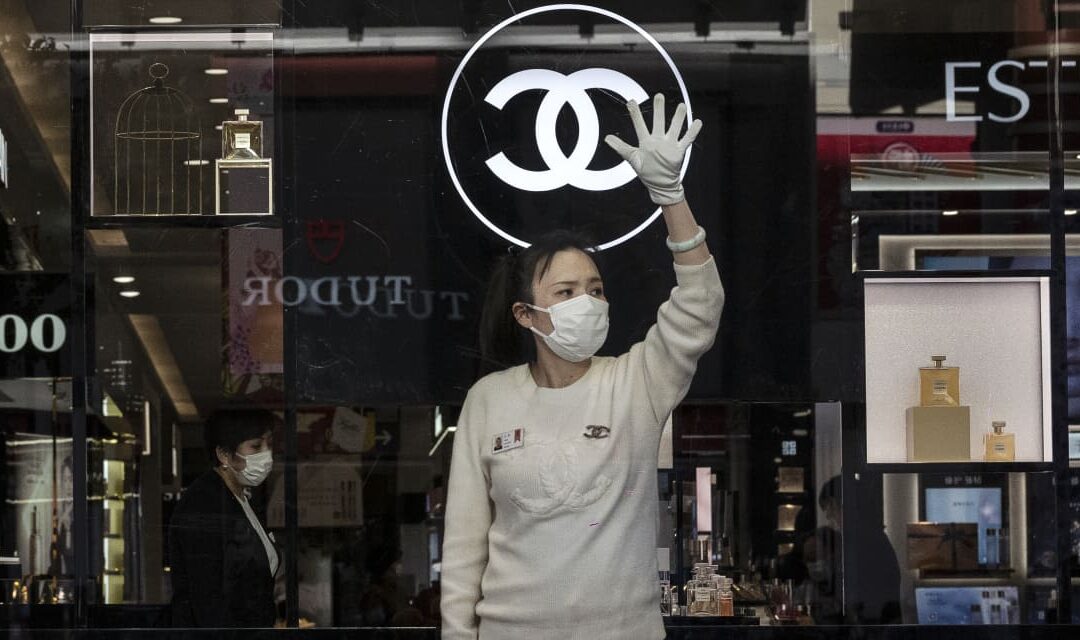China’s broader economy may be struggling, but that doesn’t seem to be stopping consumers there from splurging on more luxury clothes.
Inflation data out of China on Thursday showed that prices in January dropped a “concerningly low” 0.8% from a year ago, the biggest drop since the tail-end of the financial crisis in the fall of 2009 and the fourth straight month of declines.
And despite a bounce this week, China’s benchmark stock index, the SSE Composite
CN:510210,
has 3.7% so far in 2024 — after tumbling 26.5% over the past two years as the country’s economy has struggled to rebound in the wake of the COVID-19 pandemic. In comparison, the S&P 500 index
SPX
has gained 5.1% year to date through morning trading on Friday.
While that contrasts with a U.S. economy that has recently shown signs of reaccelerating, earnings reports from some apparel companies on Thursday suggested higher-end consumers in China are spending more on clothes while American consumers are being more frugal.
While the gains in China are coming off of a low basis — as year-ago results were depressed by COVID-related shutdowns — luxury brands still lauded the growth.
Paris-based luxury apparel and accessories seller Hermès International SCA
RMS,
reported Friday an 13% jump in fourth-quarter revenue. That was boosted by a 19% rise in revenue from Asia, excluding Japan.
Read: Hermès posts record sales as it successfully navigates worldwide luxury slump.
On Thursday, New York-based luxury lifestyle-products company Ralph Lauren Corp.
RL,
reported fiscal third-quarter revenue that rose 5.6% from a year ago. But while North America revenue was just flat, revenue from Asia increased 16%, with China sales up more than 30%, it said.
The China growth “was ahead of our expectations, even with last year’s easier compares due to the surge in COVID cases,” Ralph Lauren Chief Executive Patrice Louvet said, according to an AlphaSense transcript of the company’s earnings call with analysts.
And Tapestry Inc.
TPR,
the parent of luxury brands Coach and Kate Spade, said its sales for the fiscal second ended Dec. 30 rose 2.9%.
North America revenue was “in line” with a year ago, while international sales increased 12%, Tapestry said Thursday, adding that the “strong” growth outside of the U.S. was highlighted by a 19% jump in revenue from Greater China.
“[W]e’ve continued to see an uptick in travel spend from mainland China tourists with increases across Asia and Europe,” said Tapestry Chief Financial Officer Scott Roe on its earnings call.
While Under Armour Inc.’s
UA,
UAA,
athletic apparel may not be considered luxury, its prices are on the higher end. The company reported fiscal third-quarter revenue that was 6% less than last year on Thursday.
That decline was fueled by a 12% drop in North America revenue, which offset a 7% increase in international revenue. Although the Under Armour didn’t break out sales in China, Chief Financial Officer David Bergman said on its earnings call that “China was a leading contributor to third-quarter growth.”
The SSE Composite rallied 1.2% on Thursday, and has run up 6.1% amid a three-day winning streak that started after it closed Monday at a four-year low. Its current three-day performance is its best since it rose 6.1% over a stretch that ended March 18, 2022.









